Master the Art of Air Fryer Cooking Today
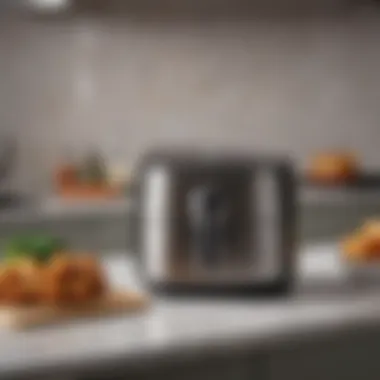

Intro
Air fryers have transformed the cooking landscape for many individuals. They offer a way to prepare various meals with less oil and reduced cooking time. Understanding how to master air fryer cooking can enhance your culinary skills and uplift your daily meal routines.
As you delve into this guide, you'll discover the mechanics of air fryers, which utilize hot air circulation to achieve a crispy exterior similar to traditional frying methods. With busy schedules being common, this guide aims to maximize your cooking efficiency while ensuring meals remain nutritious and flavorful.
Recipe Overview
- Dish Name: Crispy Garlic Parmesan Air Fryer Chicken Wings
- Servings: 4
- Total Time: 25 minutes (10 minutes prep, 15 minutes cooking)
- Difficulty Level: Easy
- Main Ingredients:
- Chicken wings
- Olive oil
- Garlic powder
- Parmesan cheese
- Salt and pepper
This dish presents a great example of how one can utilize the air fryer to create a satisfying meal without the hassle of extensive prep time. The chicken wings achieve a delightful crunch while keeping the inside tender and juicy, making them suitable for gatherings or a casual dinner at home.
Step-by-Step Instructions
- Prep the Ingredients:
- Cooking the Wings:
- Finishing Touches:
- Begin by rinsing the chicken wings under cold water and patting them dry with paper towels.
- In a large bowl, combine olive oil, garlic powder, salt, and pepper. Mix well.
- Add the chicken wings to the bowl and toss until they are evenly coated.
- Preheat the air fryer to 400°F (200°C).
- Arrange the wings in a single layer in the air fryer basket. It is crucial not to overcrowd.
- Cook for approximately 15 minutes, shaking the basket halfway through cooking for even crispiness.
- Once done, remove the wings from the air fryer.
- Sprinkle grated Parmesan cheese over the hot wings for a savory finish.
Time-Saving Strategies:
- Marinate chicken wings the night before to enhance flavors and save time on cooking day.
- Consider preparing larger batches and storing in the fridge for quick reheating.
Nutritional Information
- Calories per Serving: 320
- Proteins: 24g
- Fats: 24g
- Carbohydrates: 0g
The chicken wings are a significant source of protein. Plus, they are lower in fat compared to traditional fried versions due to the reduced oil usage. Garlic also brings several health benefits to this dish, contributing flavors and nutrients.
Quick Cooking Tips
- Utilize your air fryer for more than just frying; it can roast, bake, and grill, making it a versatile kitchen tool.
- Multitask by prepping side dishes while the wings cook. For instance, a simple salad pairs well and can be assembled in less than 10 minutes.
- Substitute regular breadcrumbs with almond flour or ground oats for a healthier alternative without sacrificing taste.
Related Recipes & Variations
- Try pairing the wings with air fryer sweet potato fries for a complete meal.
- For a lighter version, use skinless chicken breasts and adjust cooking time accordingly.
- Encourage readers to experiment with spices, such as cayenne pepper or smoked paprika, to create unique flavor profiles.
The air fryer offers an opportunity to innovate in the kitchen. Embrace these recipes and explore the possibilities this modern appliance provides.
Prelude to Air Fryers
The advent of air frying technology has revolutionized the culinary landscape. In this section, we will delve into the core principles of air fryers, emphasizing their significance in modern cooking. Air fryers are not merely appliances; they embody a lifestyle change towards healthier eating habits and time management in the kitchen. Understanding how these devices work sets the foundation for mastering their use.
Definition and Functionality
An air fryer is a kitchen appliance designed to cook food by circulating hot air around it. This method is similar to deep frying but utilizes considerably less oil, reducing the fat content in the finished dish. Typically, an air fryer comprises a heating element and a fan. The fan distributes the hot air, allowing food placed inside the basket to cook evenly on all sides.
The functionality of air fryers extends beyond frying. They can roast, bake, grill, and even reheat meals. This versatility makes air fryers appealing for various types of cuisine. For instance, preparing crispy vegetables, succulent chicken wings, or a roasted salmon is easily achievable with minimal effort.
Historical Context of Air Frying
The concept of air frying emerged as a response to growing health concerns about traditional frying methods. The first commercially available air fryer made its appearance in the culinary market in the early 2000s, predominantly influenced by European cooking trends. Initially, the technology generated skepticism among chefs and home cooks alike. However, as consumer awareness of health and nutrition rose, air fryers gained popularity rapidly.
The development of cooking technologies that promote health reflects broader societal shifts toward wellness and convenience. Consumers are increasingly seeking solutions that allow for quick meal preparation without compromising on taste or nutrition. Thus, air fryers aligned perfectly with this growing demand, paving the way for their widespread adoption in kitchens worldwide.
Benefits of Cooking with an Air Fryer
Air fryers have become increasingly popular in modern kitchens. They offer several advantages over traditional cooking methods. Here, we will explore the specific benefits that come with utilizing an air fryer over traditional frying or cooking techniques. Understanding these benefits will enhance your cooking experience and help you make healthier culinary choices.
Healthier Cooking Options
One of the primary appeals of an air fryer is its potential for healthier cooking options. Traditional frying often requires large amounts of oil, leading to high-calorie meals. In contrast, air fryers use hot air to cook food, significantly reducing the amount of oil needed. For example, you might only need a tablespoon of oil or even none at all. This creates crispy dishes without the excessive fats. The air fryer can also retain more nutrients in vegetables, compared to boiling.
Moreover, studies suggest that air frying can lower the levels of harmful compounds that form when foods are fried at high temperatures. This means using an air fryer not only can improve the nutritional profile of prepared meals but also lower health risks associated with consuming fried foods.
"Air fryers allow for a significant reduction in fat consumption without compromising taste or texture."
Time Efficiency in Meal Preparation
An air fryer is known for its time-saving capabilities. Heating up traditional ovens often takes a considerable amount of time. However, air fryers usually preheat quickly or not at all. Most air fryer recipes can have meals ready in about 30 minutes or less. For anyone managing a busy schedule, this time efficiency is valuable.
The cooking process in an air fryer is also faster because of its compact design. Food cooks more evenly and quickly, thanks to the rapid air circulation technology. The convenience of having meals ready sooner makes air fryers ideal for both weeknight dinners and last-minute entertaining.
Versatility of Cooking Techniques
Air fryers are not just limited to frying; they are versatile cooking appliances. Many air fryers come with features that allow for baking, roasting, and grilling. This variety enables home cooks to experiment with different methods in one appliance. For instance, you can bake a cake, grill chicken, or roast vegetables all in the air fryer.
The multiple functions of an air fryer allow you to recreate popular dishes with different textures. You can achieve crispy exteriors while maintaining tenderness inside. This versatility opens up a world of culinary possibilities, empowering you to explore various cuisines and recipes without needing multiple gadgets.
In summary, the benefits of cooking with an air fryer include healthier options, time-efficient meal preparation, and versatile cooking techniques. As such, it becomes a valuable asset in the kitchen for those seeking convenient and nutritious meal solutions.
Choosing the Right Air Fryer
Selecting an air fryer is a critical step in maximizing your cooking experience. With the multitude of options on the market, it can feel overwhelming to determine which model best suits your needs. Choosing the right air fryer not only ensures that you enjoy the full benefits of air frying but also enhances your cooking efficiency, leading to better meal outcomes.
Key Features to Consider
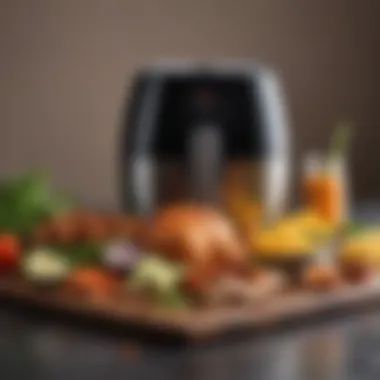
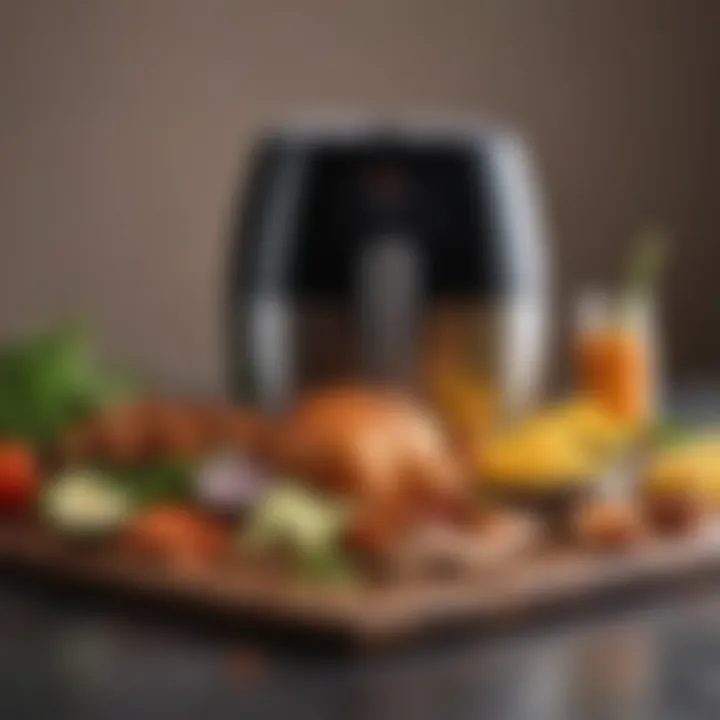
When evaluating air fryers, there are several essential features to keep in mind. These are:
- Cooking Technology: Review specific cooking technologies such as rapid air circulation and infrared heating. These technologies can significantly influence the cooking time and quality.
- Temperature Range: A wider temperature range allows for greater versatility, enabling you to prepare various dishes with different cooking requirements.
- Control Interface: Be mindful of the user interface. Some air fryers come with digital displays and pre-set functions that simplify operations. Others might rely on manual dials, which may be less intuitive.
- Safety Features: Ensure that the air fryer has features like automatic shut-off, non-slip feet, and cool-touch handles to prevent accidents during cooking.
These considerations will help you identify an air fryer capable of meeting your expectations, enhancing your culinary journey.
Size and Capacity Decisions
Capacity varies significantly among air fryers. Choosing the appropriate size is vital based on your household's needs. A smaller capacity may be suitable for individuals or couples, but larger families will benefit from models with higher capacity. Evaluate the following:
- Cooking Volume: Some air fryers can accommodate several servings at once, while others may require multiple batches for larger meals.
- Counter Space: Consider your kitchen counter dimensions. A bigger air fryer may not fit into limited spaces, even if its features are appealing.
Ultimately, selecting the right size will influence both your cooking efficiency and kitchen organization.
Comparative Analysis of Brands
The market offers a diverse range of air fryer brands, each with unique offerings. Some prominent brands include:
- Philips: Known for their innovative technology, Philips air fryers generally provide even cooking, with an easy-to-use interface.
- Ninja: Offers versatile options that not only fry but steam, bake, and roast. Their multi-functional capabilities appeal to diverse cooking styles.
- Cosori: Selected for its stylish design and programmable features, Cosori is often praised for its user-friendly interface and heat distribution.
Comparing these brands requires research into specific models and user reviews. Prioritize reviews that highlight performance consistency, durability, and customer service. This analysis will guide you towards a trustworthy brand that aligns with your culinary aspirations.
"The value of choosing the right air fryer can be seen in how easily it integrates into your cooking style. Analyze preferences and household needs carefully."
Utilizing the guidance provided here will streamline your decision-making process, leading to a well-informed choice that enhances your cooking experience.
Understanding Cooking Mechanics of the Air Fryer
Understanding the mechanics behind air frying is fundamental to mastering this cooking method. Air fryers utilize a mechanism that involves hot air circulation and precise temperature control, making it possible to achieve crispy results similar to traditional frying but with less oil. By grasping how heat circulates and the importance of timing, users can make informed choices that enhance their culinary outcomes.
Heat Circulation and Airflow
The air fryer operates using a convection cooking method. A fan circulates hot air around the food, allowing for even cooking and browning. This not only helps in achieving that sought-after crispiness but also ensures that the food cooks evenly. Understanding how airflow interacts with food items can significantly improve results.
Key points to consider include:
- Food Placement: Avoid overcrowding the basket as this can obstruct airflow. Individual pieces should have enough space.
- Basket Design: The design of the air fryer basket allows for optimal air circulation. Baskets with holes or mesh can enhance airflow, contributing to better cooking results.
- Batch Cooking: In cases where more quantity is needed, consider batch cooking. Cooking smaller amounts at one time will yield a better outcome than forcing too much food into the air fryer at once.
"The secret to perfect air frying lies in how well air circulates around the food."
Temperature Control and Timing
Temperature control is critical when using an air fryer. Different foods require different temperatures and cooking times. Air fryers often have preset programs, but it’s beneficial to understand basic timing principles based on the type and thickness of food.
- Adjusting Temperature: Foods like vegetables may cook well at higher temperatures (around 400°F), while meats may benefit from a lower temperature to ensure they cook through without burning. This will vary between different models but knowing the general rule is crucial.
- Monitoring Cooking Time: Keep an eye on the cooking progress. Air frying can be quicker than traditional ovens, so checking several minutes before the suggested time can prevent overcooking.
- Experimentation: Try using a cooking thermometer to check the internal temperatures of your dishes. This will help in correcting cooking times and achieving desired doneness.
Understanding these mechanics allows users to optimize their cooking, making it possible to create better meals more efficiently. With awareness of heat circulation and temperature variations, you can enhance the overall experience of cooking with an air fryer.
Essential Tips for Air Fryer Success
Understanding how to effectively use your air fryer can make a significant difference in cooking outcomes. These essential tips serve as a practical guide for both novices and seasoned culinary enthusiasts. Proper air fryer techniques maximize efficiency, enhance flavor, and avoid common pitfalls. Recognizing these elements ensures a better cooking experience, producing consistently superior results that align with health-conscious goals.
Preheating Techniques
Preheating the air fryer is often an overlooked step, yet it plays a crucial role in achieving optimal cooking results. By preheating, you create a stable cooking environment that allows food to cook evenly. Time saved during the cooking process is essential, especially for busy individuals.
To preheat effectively, set the fryer to the desired temperature for a few minutes before adding food. Most air fryers have a preheat function that simplifies this process. The duration may vary based on the model, but typically 3 to 5 minutes will suffice.
- Advantages of Preheating:
- Ensures even cooking
- Reduces total cooking time
- Enhances food texture
Your food will achieve that ideal crispiness as the fryer is ready to work its magic from the moment ingredients are added.
Proper Food Placement
Food placement is paramount when using an air fryer. This appliance relies on hot air circulation to cook food evenly. If items are overcrowded, you risk uneven cooking and soggy textures.
- Best Practices for Food Placement:
- Arrange food in a single layer.
- Avoid stacking or piling items.
- Leave some space between pieces to allow for airflow.
If you need to cook a larger batch, do so in multiple stages to guarantee consistent results. You can consider using air fryer accessories like racks to create layers if necessary but ensure that air can still circulate effectively.
Using Oil Strategically
Oil serves an important function in air frying. While it is not always necessary, using the right amount can enhance flavor and texture. However, too much oil can defeat the purpose of healthier cooking.
- Tips for Using Oil:
- Opt for spritzing or lightly brushing oil on food before cooking.
- Use oils with a high smoke point, such as avocado or vegetable oil.
- Be mindful of oil quantities—less is often more in air frying.
Using oil strategically not only adds a delightful crispiness but also helps with browning, creating appealing visual and taste experiences.
Mastering these tips will elevate your air frying capabilities and ultimately transform your meal preparation into a streamlined process.
Incorporating these essential techniques into your cooking routine can make a substantial impact, enhancing meals and saving valuable time. By focusing on preheating, food placement, and oil usage, you position yourself for air fryer success.
Adapting Traditional Recipes for Air Frying
Adapting traditional recipes for air frying is crucial for maximizing the potential of this kitchen appliance. The air fryer offers a healthier alternative to traditional frying without sacrificing flavor. Understanding what modifications should be made to classic recipes helps cooks maintain their favorite flavors while enjoying the benefits of air frying. Utilizing this method can significantly reduce cooking times and make meals simpler and less calorie-dense.


What to Modify
When adapting recipes, consider the following elements:
- Fat Content: Traditional frying often requires a considerable amount of oil. In air frying, adjusting the oil used can greatly influence texture without losing taste. Use less oil or opt for a spray to create a crisp exterior.
- Breading Techniques: If a dish calls for breading, you might need to alter the method. Panko breadcrumbs tend to create a more satisfying crunch than traditional breadcrumbs.
- Size and Thickness: Cut ingredients into smaller pieces. The air fryer's effectiveness relies heavily on proper airflow around the food. Smaller pieces will cook more evenly and quickly.
- Cooking Temperature: Most recipes specify cooking temperatures intended for conventional ovens or deep fryers. Air fryers typically need lower temperatures. A rule of thumb is to subtract about 25 degrees Fahrenheit from the traditional temperature.
By focusing on these modifications, one can retain the essence of beloved dishes while maximizing the benefits of air frying.
Cooking Time Adjustments
Like temperature, cooking times also require careful adjustment when shifting to air frying. Here are key considerations:
- Shorter Cooking Times: Generally, air frying takes less time compared to conventional cooking methods. Start checking for doneness at about two-thirds of the original cooking time stated in the recipe.
- Monitoring Doneness: Regularly check the food to prevent overcooking. Each air fryer can vary slightly in performance, so it is wise to rely on visual cues, like golden-browning, rather than strictly timing.
- Batch Cooking: Avoid overcrowding your air fryer, as it will impede the cooking process. For larger recipes, consider cooking in batches to ensure that each piece receives adequate heat circulation.
"Cooking is an art, and adapting it to modern technology can refine that artistry."
By making these adjustments, cooks not only boost efficiency but also ensure that the final product retains the vibrant flavors that make traditional recipes so cherished. Integrating these changes leads to a more pleasurable cooking experience and healthier meals.
Quick and Easy Air Fryer Recipes
In today’s fast-paced world, finding time to prepare meals often feels like a daunting task. Quick and easy air fryer recipes play a crucial role in efficient cooking, allowing busy individuals to create wholesome dishes without investing hours in the kitchen. The air fryer simplifies the cooking process, making it possible to enjoy delicious meals that cater to various dietary needs and preferences.
Air fryers are celebrated for their ability to cook food rapidly while achieving a desirable crispiness. Leveraging hot air circulation, they facilitate the preparation of a wide array of dishes, from breakfast to dinner. This section highlights the significance of air fryer recipes that reduce cooking time without compromising flavor or nutrition.
Hearty Breakfast Options
Breakfast can often be a challenging meal to prepare quickly. With the air fryer, options become more accessible. For instance, you can make air-fried eggs that are fluffy and perfectly cooked in under ten minutes. Simply crack the eggs into a ramekin, season, and set them in the air fryer basket. Another excellent option is air-fried oatmeal cups. Mixing oats, banana, and almond milk forms a delicious mixture that can be molded into shapes and air-fried for a quick breakfast on the go.
Here are a few hearty breakfast ideas:
- Air Fryer Breakfast Burritos with scrambled eggs, beans, and cheese wrapped in a tortilla.
- Apple Cinnamon Oatmeal Cups that give an energy boost for the day.
- Veggie-Packed Frittatas that can be sliced and stored for advances meal prep during busy weekdays.
Main Dishes for Lunch and Dinner
Dinners can be overwhelming when trying to juggle several tasks. Air fryers can dramatically reduce cooking time, allowing for diverse main dishes. A popular option is air-fried chicken breasts. Simply season them and set the air fryer for 12-15 minutes. The result is juicy chicken with a crispy exterior, fitting for any meal. Another great choice is an air fryer stir-fry, where you can combine assorted vegetables and proteins, getting a nutritious meal ready in a fraction of the time.
Consider these options for effortless main dishes:
- Salmon Fillets seasoned with lemon and herbs come out tender yet flaky in no time.
- Stuffed Bell Peppers that can be filled with quinoa, ground meat, or veggies, then quickly air-fried for dinner.
- Beef Tacos that use the air fryer to create crispy shells and perfectly cooked beef.
Nutritious Snacks and Appetizers
Snacks can be both quick and healthy when using an air fryer. For instance, homemade sweet potato fries warrant attention. Simply slice sweet potatoes, coat them lightly in oil, and toss them in the air fryer for a crunchy treat. Furthermore, air-fried chickpeas are not only nutritious but also provide a savory crunch that replaces conventional chips.
Here are some healthy snack options:
- Air Fryer Zucchini Chips seasoned to taste, perfect for an afternoon pick-me-up.
- Crispy Brussels Sprouts, drizzled with balsamic glaze for added flavor.
- Stuffed Mushrooms filled with cream cheese and herbs can also be made in minutes.
The versatility of the air fryer not only promotes healthier eating but also allows for creativity in the kitchen.
These quick and easy air fryer recipes illustrate how this appliance can enhance meal preparation across different types of dishes, ensuring nutrition and ease go hand in hand.
Cleaning and Maintenance of the Air Fryer
Cleaning and maintaining the air fryer is crucial for ensuring its longevity and optimal performance. An air fryer that is not cleaned properly can lead to undesirable flavors in food, decreased cooking efficiency, and even potential safety hazards. Regular cleaning removes buildup of oil and food particles that can contribute to smoking or burning during cooking. Additionally, proper maintenance will maximize the appliance's lifespan and maintain the quality of the meals prepared.
Cleaning Techniques
Effective cleaning techniques are necessary to preserve the air fryer's functionality. Here are several methods to consider:
- Unplug the Air Fryer: Before starting any cleaning, unplug the appliance for safety.
- Remove the Basket and Drawer: Most air fryers come with a removable basket and drawer which makes cleaning easier.
- Soak in Warm Soapy Water: Place the basket and drawer in warm soapy water for a few minutes to loosen food residue.
- Use a Non-Abrasive Sponge: Wipe down the interior and exterior surfaces with a non-abrasive sponge or cloth to avoid scratches. Avoid metal scrubbers, as they can damage the non-stick coating.
- Clean the Heating Element: Check the heating element for splatters or buildup. Use a damp cloth to carefully clean it, ensuring that it is fully dry before reassembling the fryer.
- Dry Completely: Ensure that all components are dried properly before reassembling and storing. This prevents any moisture from lingering, which could lead to mold or mildew.
Regular cleaning ensures an optimal cooking experience and prevents unwanted flavors.
Storage Recommendations
Proper storage of the air fryer is just as important as cleaning. Follow these recommendations for effective storage:
- Cool Down Before Storing: Allow the appliance to cool down completely before packing it away. This prevents damage to internal components and avoids burns.
- Avoid Overcrowding: Store the air fryer in a space that allows for air circulation around it. Avoid placing heavy items on top of it, as this can break components.
- Keep Cords Organized: Use a twist tie or small container to keep the cord neatly organized and prevent tangling.
- Protect the Surface: If storing in a place where it may be exposed to dust or debris, consider using a breathable cover to protect the unit without trapping moisture.
- Check Periodically: If the air fryer is not used frequently, check on it every so often. Ensure that it remains clean and free from any pests.
By adhering to these cleaning and maintenance techniques, you ensure not only a clean appliance but also one that performs reliably, allowing you to enjoy efficient and flavorful cooking consistently.
Common Mistakes and How to Avoid Them
In the realm of air frying, there are several common pitfalls that can hinder an otherwise straightforward cooking experience. Understanding these mistakes is crucial for optimizing the air frying process, promoting healthier meals, and achieving superior culinary results. This section will dissect the common mistakes made by users, encouraging more effective use of the air fryer. Addressing these issues not only enhances food quality but also extends the lifespan of the appliance. By learning how to circumvent these errors, cooks can enhance their confidence and proficiency in the kitchen.
Overcrowding the Basket
One prevalent mistake is overcrowding the air fryer basket. While it may be tempting to prepare a large quantity of food at once, doing so can lead to uneven cooking and compromised results. Air fryers rely on circulating hot air to cook food evenly. When the basket is packed tightly, air cannot flow freely around each piece of food. This obstruction can lead to some items being undercooked while others are overcooked or dried out.
To avoid overcrowding:
- Cook in Batches: It is often more effective to cook smaller portions. Doing so ensures adequate airflow, resulting in an evenly cooked meal.
- Use Racks or Accessories: If your air fryer supports it, use additional racks or accessories to increase cooking capacity without crowding.
- Choose the Right Size: When selecting an air fryer, consider one that meets your cooking needs. A larger model may be necessary for families or frequent entertainers.
By adhering to these strategies, users can maximize cooking efficiency and enjoy the full range of flavors and textures that air frying offers.
Inconsistent Cooking Results
Another common issue faced by air fryer users is inconsistent cooking results. This inconsistency can stem from various factors, including incorrect temperature settings, overcooking or undercooking food items, or not adjusting cooking times based on the type of food. Such results can be frustrating and may lead to meal dissatisfaction or food waste.
To ensure consistent cooking results:
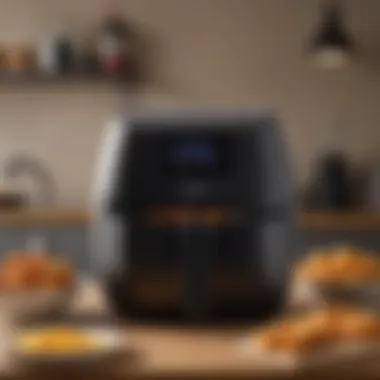
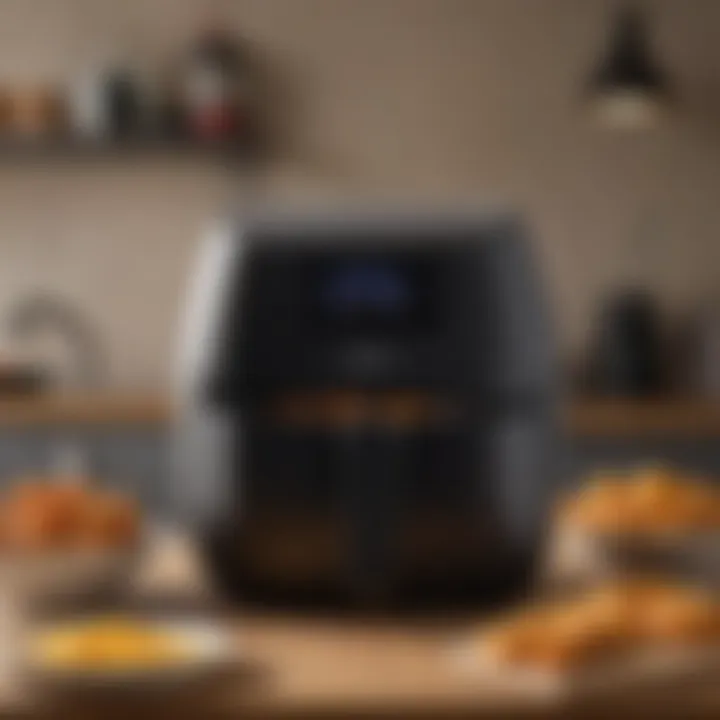
- Regularly Calibrate Your Air Fryer: Like all appliances, air fryers can have variations in temperature. Use an oven thermometer to ensure that the device is operating at the correct temperature.
- Adhere to Recipe Guidelines: Different foods require different cooking times. Referencing specific air fryer recipes for time and temperature can vastly improve results.
- Rotate or Stir Food: For items cooked in a larger batch, consider pausing the cooking process to toss or rotate them. This action promotes even exposure to hot air, thus yielding more uniform finishes.
Being aware of these factors dramatically improves the user experience and boosts cooking success. Addressing these mistakes not only builds confidence but also transforms the air frying experience into one that is enjoyable and rewarding.
Advanced Air Fryer Techniques
Advanced air fryer techniques are crucial for maximizing the potential of this versatile kitchen appliance. In the world of culinary arts, innovation often leads to improved flavors and textures. For air fryers, understanding and employing these techniques can elevate a meal from ordinary to extraordinary. There is a growing interest in unconventional methods that combine multiple cooking styles, as well as the personal touch of homemade ingredients. These techniques provide opportunities to vary textures and flavors, which enhances not just the meal experience, but also the cooking process itself.
Combining Cooking Methods
When it comes to enhancing the capability of your air fryer, combining different cooking methods can be particularly effective. The air fryer shines in its ability to circulate hot air rapidly, creating that crunchy, fried texture without the excess oil. However, pairing this feature with other methods, like sous vide or pressure cooking, can add depth to your dishes.
For example, consider cooking chicken sous vide first. This process ensures the meat retains moisture and is perfectly cooked throughout. Afterward, giving it a quick air fry will grant the skin that desired crispiness and golden-brown color. This approach not only preserves the juiciness of the chicken but also allows for varied textures and a more sophisticated final dish.
Additionally, air frying can be layered with other cooking techniques, like baking. You can bake a casserole in your oven, then transfer it to the air fryer for a few minutes. The result is a delightful mix of soft and crispy textures, enhancing the overall experience of the meal.
Making Homemade Ingredients
Creating your own ingredients is another advanced technique that allows chefs to tailor dishes precisely to their taste. Store-bought options often contain additives and preservatives. Making your own ingredients, such as spices, sauces, or doughs, can significantly improve both flavor and health benefits. For instance, homemade garlic powder or spice blends can be prepared and stored for easy access. This approach not only saves time but also allows for customization based on individual flavor preferences.
Furthermore, consider attempting homemade bread or chips. Traditional recipes may not fit well in an air fryer, but with slight adjustments, you can achieve delightful results. Experimenting with different types of dough or batters can lead to unique textures that store-bought versions can't match.
- Create your own breadcrumbs using stale bread, and air fry them for a crispy coating.
- Try making your personal version of potato chips by slicing potatoes thinly, soaking them, and tossing them with your choice of seasonings before placing them in the air fryer.
Using these methods provides a sense of ownership over your food, and it increases the satisfaction that accompanies a home-cooked meal.
"Exploring advanced techniques not only enhances flavor but also inspires creativity in the kitchen."
In summary, incorporating advanced air fryer techniques, like combining cooking methods and making homemade ingredients, enables culinary enthusiasts to push the boundaries of traditional cooking. With practice, these techniques will lead to improved flavors, textures, and ultimately more enjoyable meals.
Lifestyle Integration: Making the Most of Your Air Fryer
Integrating an air fryer into one's culinary routine can significantly enhance both meal preparation and overall lifestyle. The air fryer is not just a kitchen gadget; it represents a shift towards healthier eating and time-efficient cooking practices. This section delves into how to effectively incorporate an air fryer into daily life, highlighting its benefits and considerations.
Meal Planning with the Air Fryer
Effective meal planning is essential for maximizing the potential of an air fryer. Having a structured approach can streamline cooking and reduce waste. By planning meals ahead, one can select recipes that utilize the air fryer. For example, a weekly menu may include chicken wings, roasted vegetables, and air-fried desserts. Ensuring a variety of food keeps the diet enjoyable.
- Batch Cooking: Preparing large quantities of food in advance saves time during busy weeknights.
- Ingredient Versatility: Many ingredients can be marinated or prepped in advance, making the air fryer even more effective for quick meals.
- Contingency Recipes: Having go-to recipes that can be assembled quickly can alleviate stress when unexpected guests arrive.
Consider creating a shopping list based on the meal plan to eliminate impulse purchases at the grocery store. One might also want to allocate time for prep work during weekends to facilitate smoother cooking throughout the week.
Time-Saving Strategies
In today's fast-paced world, time-saving strategies become indispensable. An air fryer excels in this area, enabling quick cooking with minimal supervision. The following strategies can help to optimize time spent in the kitchen:
- Preheat Function: Utilizing the air fryer's preheat function ensures that the cooking begins promptly. A well-preheated air fryer reduces the cooking time for many recipes.
- One-Pot Meals: Consider creating one-pot meals that mix proteins and vegetables together. This reduces the number of pans used, simplifying both cooking and cleaning.
- Schedule Cooking Times: Scheduling specific times for cooking can help establish a routine. Knowing when to start cooking will help avoid last-minute rushes.
- Use of Leftovers: Turning leftovers into new meals can also save time. For instance, air-frying leftover chicken to create a salad can yield a nutritious meal in less than 10 minutes.
Incorporating these strategies can lead to a more efficient kitchen experience, aligning well with the modern lifestyle that values both health and time management.
"The air fryer is not merely a tool; it’s a catalyst for a more organized and health-conscious lifestyle."
With thoughtful planning and strategic use of time, the air fryer can swiftly transform the mundane process of cooking into an enjoyable and efficient routine.
Exploring Global Cuisine with an Air Fryer
Exploring global cuisine with an air fryer opens up a rich tapestry of culinary traditions, making it accessible for home cooks. This section provides a unique perspective on how this versatile kitchen appliance can adapt various cultural dishes, embracing flavors from around the world. An air fryer can deliver authentic tastes while promoting healthier eating habits by reducing oil usage. The ability to recreate regional recipes not only broadens one’s culinary skills but also fosters an appreciation for diverse cultures.
Incorporating an air fryer into the preparation of international dishes can present several benefits. It enhances the cooking experience by combining convenience and a variety of flavors. The appliance encourages experimentation, allowing individuals to explore global fare from the comfort of their kitchen. For instance, traditional methods often involve frying or prolonged cooking, while air frying drastically reduces the time, making ethnic cooking practical for busy schedules.
Moreover, this approach promotes healthier alternatives by facilitating lower-fat versions of popular dishes, preserving their essence without the excessive calories.
Regional Recipes Adapted for Air Frying
Incorporating air fryers in regional recipes can transform the way those dishes are prepared. Many classic flavors can be retained or even enhanced. Here are a few examples:
- Samosas: Traditionally deep-fried, they can be made crispy and delicious in an air fryer with far less oil.
- Falafel: Instead of frying, air frying gives falafel a crispy finish outside while remaining moist inside.
- Taquitos: These can achieve that crunch we love without the unnecessary grease.
These recipes show how air frying can adapt to regional specialties. The method not only simplifies cooking but also elevates flavors by creating new textures without sacrificing authenticity.
Cultural Considerations in Air Frying
When adapting international recipes to an air fryer, it is essential to consider cultural significance. Each dish carries a history and often ties to specific rituals or occasions. Here are a few key considerations:
- Ingredient Authenticity: Using traditional ingredients is crucial. Recreating the taste of a region relies heavily on its spices and components.
- Cooking Methods: While air frying is convenient, understanding the original cooking method is vital. This awareness can guide the cook in adjusting techniques while paying homage to the tradition.
- Presentation: Food presentation varies across cultures. Understanding these aspects ensures that the dish aligns with cultural expectations.
By taking these factors into account, cooks can honor culinary heritage while embracing modern cooking techniques.
Exploring global cuisine through an air fryer does not just create meals; it builds connections to cultures, fostering respect and appreciation for their culinary traditions.
The End: The Future of Cooking with an Air Fryer
The concept of air frying is becoming increasingly significant in contemporary culinary practices. As more individuals embrace healthier lifestyles, the air fryer is poised to play an essential role in food preparation. The ability to cook with less oil, while maintaining flavor and texture, aligns with the current trend of seeking nutritious yet satisfying meals. This shift represents not only a change in cooking habits but also an evolution in how people perceive healthy eating.
Trends and Innovations
Air frying technology has undergone substantial innovation since its introduction. New models come equipped with advanced features that elevate the cooking experience. For example, some air fryers now have built-in rotisserie options, allowing for even cooking of whole chickens and other large cuts of meat. Moreover, digital interfaces present precise controls over cooking time and temperature, making meal preparation more efficient and user-friendly.
Another emerging trend is the integration of smart technology. Many modern air fryers connect to smartphones or tablets, enabling users to monitor cooking progress remotely or access numerous recipes online. This connectivity not only enhances convenience but also encourages culinary exploration.
"The air fryer is not just a trend; it's a culinary revolution that continues to evolve with technology."
Final Thoughts on Culinary Efficiency
The air fryer greatly contributes to culinary efficiency. Its ability to reduce cooking times while delivering quality results sets it apart from traditional frying methods. Home cooks can produce crispy, delicious meals without the wait associated with conventional ovens. This efficiency is especially valuable in busy households where time is a premium.
Furthermore, the air fryer's versatility allows for various cooking methods, including roasting and baking, all in one appliance. This capability simplifies meal prep and encourages creativity with ingredients.
In summary, as trends continue to evolve, the air fryer is likely to adapt and integrate more advancements, reinforcing its place in modern kitchens. Moving forward, consumers will have the opportunity to explore even more sophisticated uses of the air fryer, enhancing both their culinary repertoire and overall health.







